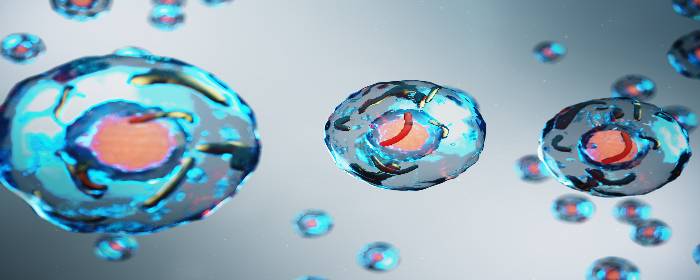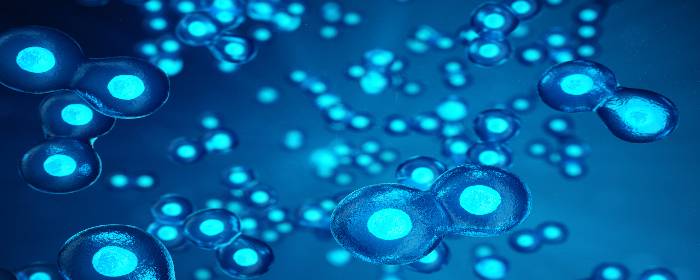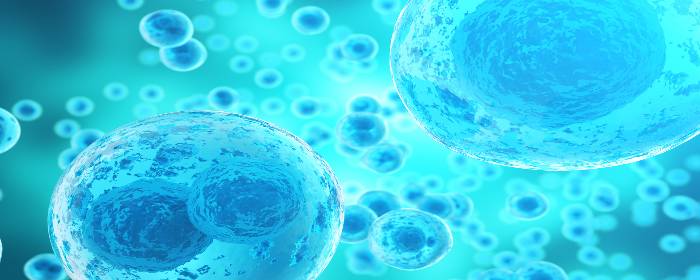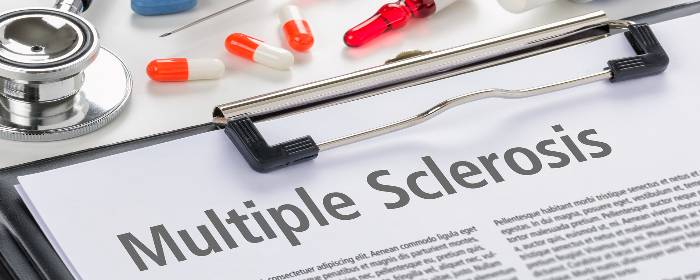
by admin | Apr 8, 2019 | Stem Cell Research, Stem Cell Therapy, Umbilical Stem Cell
Much of the initial excitement surrounding stem cells was that they have the potential to become other types of cells. Add cardiac stem cells to a heart damaged by a heart attack, for example, and perhaps those stem cells will become new heart cells and restore heart function. While this does occur—stem cells differentiated mature into adult cells—a fascinating and potentially more exciting use of stem cells is for what they secrete rather than what they become.
Over the past few years, researchers have become increasingly interested in the beneficial substances that stem cells secrete. Researchers refer to the collection of substances that stem cell secretes as its secretome. Stem cell researchers grow various kinds of stem cells in the laboratory and then measure the substances that the stem cells secrete to identify its secretome.
Dr. Hsieh and coauthors discovered that stem cells taken from human umbilical cord secrete an astounding number of helpful molecules. The scientists collected mesenchymal stem cells from Wharton’s jelly (which is a substance found in the human umbilical cord that is normally thrown away as medical waste). They then compared those mesenchymal stem cells with stem cells taken from bone marrow. The researchers found that the umbilical cord mesenchymal stem cells produced molecules that help protect nerve cells, helps nerve cells grow, and help blood vessels grow. The effects were much greater than from cells taken from bone marrow.
One interesting result from their scientific study was the effect of umbilical cord mesenchymal stem cells on injured nerve cells. The researchers deprived brain cells of sugar and oxygen to mimic what the cells would experience during a stroke. The substances secreted by stem cells protected the nerve cells during this harsh treatment. This effect was much stronger in the umbilical cord stem cells compared to the bone marrow stem cells.
Another interesting result from this research was that umbilical cord mesenchymal stem cells helped blood vessel cells organize and form new blood vessels (“tubes”). This could be very important for establishing blood flow to damaged tissue from burns, frostbite, heart attack, or stroke.
These results show that mesenchymal stem cells taken from umbilical cord tissue (Wharton’s jelly) have a unique secretome, which is more potent than similar cells taken from bone marrow. This research is particularly important for patients who have suffered an ischemic stroke or heart attack, as it may provide a clue for a way to treat these conditions in the future.
Reference: Hsieh et al. (2013). Mesenchymal Stem Cells from Human Umbilical Cord Express Preferentially Secreted Factors Related to Neuroprotection, Neurogenesis, and Angiogenesis. PLOS One.2013; 8(8): e72604.

by admin | Mar 29, 2019 | Mesenchymal Stem Cells, Stem Cell Research, Stroke, Umbilical Stem Cell
An ischemic stroke is a devastating event. An ischemic stroke is caused when a blood clot blocks blood flow to a portion of the brain. If the blood cannot deliver oxygen and nutrients, brain cells in the affected area die. Whatever functions that area of the brain once performed are now lost—brain cells do not regenerate the same way as other cells do.
Not surprisingly, researchers are trying to find ways to restore dead brain cells so that patients can regain function. Stem cells are one of the most promising options in this pursuit. Stem cells can reduce brain damage caused by ischemia (lack of blood flow, nutrients, and oxygen). Moreover, stem cells can help animals with stroke regain neurological function.
Scientists have wondered, however, whether mesenchymal stem cells taken from the umbilical cord can achieve the same effects. Umbilical cord tissue is plentiful and the cells taken from the umbilical cord have many incredible properties.
Dr. Zhang and researchers in his group extracted mesenchymal stem cells from umbilical cord tissue collected from humans. This umbilical cord tissue is usually thrown away after a baby is born, but researchers have been collecting this material because it is rich in mesenchymal stem cells. The researchers then created ischemic strokes in rats by blocking one of the arteries to the brain. They then used stem cells to try to block the damaging effect of stroke in these rats.
The stem cells were given to the rats intravenously. The stem cells moved from the bloodstream into the brain and collected in the area of the stroke. Some of the stem cells actually became new brain cells in the damaged area. Moreover, rats treated with stem cells had better physical functioning than animals who did not receive stem cell treatment.
While this study was performed in rats, the implications for humans are profound. This work shows that mesenchymal stem cells taken from the umbilical cord are capable of improving function after stroke. This is exited news since it is much easier to obtain stem cells from umbilical cord tissue that it is from bone marrow (which requires an invasive procedure).
Reference: Zhang, Lei et al. (2017). Neural differentiation of human Wharton’s jelly-derived mesenchymal stem cells improves the recovery of neurological function after transplantation in ischemic stroke rats. Neural Regeneration Research. 2017 Jul; 12(7): 1103–1110.

by admin | Mar 14, 2019 | Spinal Cord Injury, Stem Cell Research
Traumatic spinal cord injury is a potentially devastating event in which the nerves and nerves cells in the spinal cord are damaged. In the United States, more than a quarter of a million people struggle with the lifelong consequences of traumatic spinal cord injury. The consequences of spinal cord injury vary from person to person, but each person usually must deal with several complications. Many people with spinal cord injury are paralyzed. They are at risk for pressure ulcers, blood clots in the legs, urine and bowel problems, and sexual dysfunction. Despite being paralyzed, as many as two-thirds of patients with spinal cord injury experience chronic pain, which is difficult to treat. Spinal cord injury can also affect how the heart and lungs function.
There are no specific treatments for spinal cord injury. If the injury is treated early, steroids and spine surgery/neurosurgery can help reduce long-term complications. In some cases of incomplete spinal cord injury, physical therapy can help people regain some degree of function. For the most part, treatment is aimed at reducing symptoms rather than curing the injury. Treating the symptoms helps make the disease less of a burden, but is by no means the same as a cure.
Because spinal cord injury has such long-lasting and devastating effects, researchers are actively pursuing ways to heal injured spinal cord nerve cells. One possible way to do this is through the use of stem cells.
Liu and coauthors conducted a clinical trial on 22 patients with spinal cord injury. The doctors collected mesenchymal stem cells from umbilical cord tissue that would normally be discarded as medical waste after delivery. They purified the stem cells and then used them to treat the injured patients. Astoundingly, stem cell treatment was effective in 13 of 22 patients. Patients who achieved benefit from stem cells enjoyed the return of motor function, sensory function, or both. All patients who were treated with stem cells reported less pain, improved sensation, better movement, and a greater ability to provide self-care. Importantly, the treatment did not cause any notable side effects for up to three years after treatment.
These clinical trial results are truly remarkable, but it is important to note that the number of patients treated was small and further testing is needed. Nevertheless, the researchers concluded that treatment with mesenchymal stem cells derived from umbilical cells is safe, and can improve function and quality of life in most patients with spinal cord injury.
Reference: Liu et al. (2013). Clinical analysis of the treatment of spinal cord injury with umbilical cord mesenchymal stem cells. Cytotherapy. 2013 Feb;15(2):185-91.

by admin | Mar 8, 2019 | Mesenchymal Stem Cells, Multiple Sclerosis, Stem Cell Research, Stem Cell Therapy
Of all conditions that affect the central nervous system, Multiple Sclerosis (MS) is the most common in young adults. The severity of multiple sclerosis varies considerably and can affect almost every organ system in the body affecting eyesight, bowel function, bladder function, and sexual function. Multiple sclerosis may cause cognitive problems, depression, seizures, fatigue, and pain. Most people with multiple sclerosis will have a relapsing-remitting course, which means they will have periods of relative health punctuated by flare-ups of the condition. About one out of ten people with the condition will have primary progressive multiple sclerosis, which means once the disease occurs it almost constantly causes symptoms and progresses over time.
Multiple sclerosis appears to be an inflammatory condition that affects the covering around nerves. During acute flareups/exacerbations, physicians usually prescribe a powerful steroid medication such as methylprednisolone to combat the inflammation. Patients with multiple sclerosis generally always require some sort of treatment to help manage their immune system. No fewer than 15 immune modulating treatments have been used to treat multiple sclerosis, none of which provides a cure. As such, researchers are seeking new and innovative ways to treat this potentially debilitating condition.
Researchers at the Tisch Multiple Sclerosis Research Center of New York chose to focus their research efforts on a particular type of stem cell, namely bone marrow-derived mesenchymal stromal cells. The researchers harvested these cells from the patients themselves (autologous stem cells). Then, in their laboratory, scientists used various means to prompt the cells to become neural progenitors. A neural progenitor cell is a cell that can become any of the three main types of brain cells: neurons, astrocytes, or oligodendrocytes. Incidentally, oligodendrocytes are believed to be most affected in multiple sclerosis.
Harris and co-authors at the Tisch Center enrolled six patients with progressive multiple sclerosis. These six patients had failed to find relief from other conventional multiple sclerosis treatments. The researchers provided between 2 to 5 infusions of neural progenitor cells into the spinal fluid. The multiple sclerosis patients treated with the cells tolerated the treatment very well. No serious adverse events occurred, nor were there any safety concerns during treatment. Impressively, four of the six patients—for whom no other multiple sclerosis treatment worked—had a measurable clinical improvement after stem cell treatment.
Based on the results of this clinical study, the scientists concluded that neural progenitor cells created from autologous mesenchymal stromal cells were safe to use in patients with primary progressive multiple sclerosis. Moreover, the beneficial effect witnessed in two-thirds of treated patients suggests that these cells may be able to help patients with even the most severe and difficult-to-treat forms of multiple sclerosis. Of course, additional testing is required before this treatment becomes commonplace, but the results of this first-in-human clinical study are extremely encouraging.
Reference: Harris et al. (2016). Clinical safety of intrathecal administration of mesenchymal stromal cell-derived neural progenitors in multiple sclerosis. Cytotherapy. 2016 Dec;18(12):1476-1482.

by admin | Mar 4, 2019 | Mesenchymal Stem Cells, Osteoarthritis
Osteoarthritis is the most common form of arthritis. In fact, when people casually use the term “arthritis” or think of the arthritis of old-age, they are usually talking about osteoarthritis. People with arthritis experience many symptoms in and around the affected joints including pain and swelling. The affected joints may become unstable or “give out.” At the same time, people who suffer from osteoarthritis may not be able to move their joints fully or smoothly. Commonly people feel that their joints are “stiff.”
Early in osteoarthritis, the pain may just occur occasionally. Perhaps, the person feels sharp pain when moving a certain way. In later stages of osteoarthritis, the affected joints constantly ache, and moving the joint becomes intensely painful.
Nonsteroidal anti-inflammatory drugs or NSAIDs can help in some cases, but they become less effective as osteoarthritis becomes more severe. Often people with osteoarthritis must receive injections of anesthetics and steroids into the joints itself. Ultimately, patients often need orthopedic surgery to grind away diseased joint tissue or even replace the joint with the artificial one.
Researchers are searching for ways to reverse osteoarthritis instead of just treating the symptoms. Fortunately, stem cells may offer hope. Doctors have long known that in people with osteoarthritis, the cartilage becomes thin and breaks down. Joint cartilage lubricates the joint, acts as a shock absorber, and helps the joint move smoothly. When cartilage breaks down, the joint becomes stiff, painful, and irritated. As recent research suggests, mesenchymal stem cells may rebuild and restore joint cartilage.
Two scientists, Kristjánsson and Honsawek, recently reviewed the state of the research in this field. They identified eight clinical studies that tested mesenchymal stem cells on patients with varying degrees of osteoarthritis. The clinical trials demonstrated several intriguing findings. Most notably, mesenchymal stem cells were able to promote cartilage regeneration, reduce pain, and improve joint function. The scientists also found that the more stem cells that were injected, the better the outcome. In addition, the beneficial effect of stem cells occurred whether the cells were taken from the patient (autologous stem cells) or from young, healthy donors (allogenic stem cells).
Importantly, patients with mild to moderate osteoarthritis enjoy the greatest apparent benefit from stem cell injections. This suggests that doctors and patients should consider stem cell treatment earlier in the course of osteoarthritis before joints become too damaged and likely require surgery.
Mesenchymal stem cell injection for osteoarthritis has now been tested in at least eight clinical studies including randomized clinical trials, which are the gold standard studies for evaluating treatments in medicine. Research is ongoing and still needed but these results are strongly encouraging. They may offer, for the first time, a way for patients to reverse the changes of osteoarthritis rather than simply treating the symptoms of the disease.
Reference: Kristjánsson et al. (2017). Mesenchymal stem cells for cartilage regeneration in osteoarthritis. World Journal of Orthopedics. 2017 Sep 18; 8(9): 674–680.






 St. Petersburg, Florida
St. Petersburg, Florida
